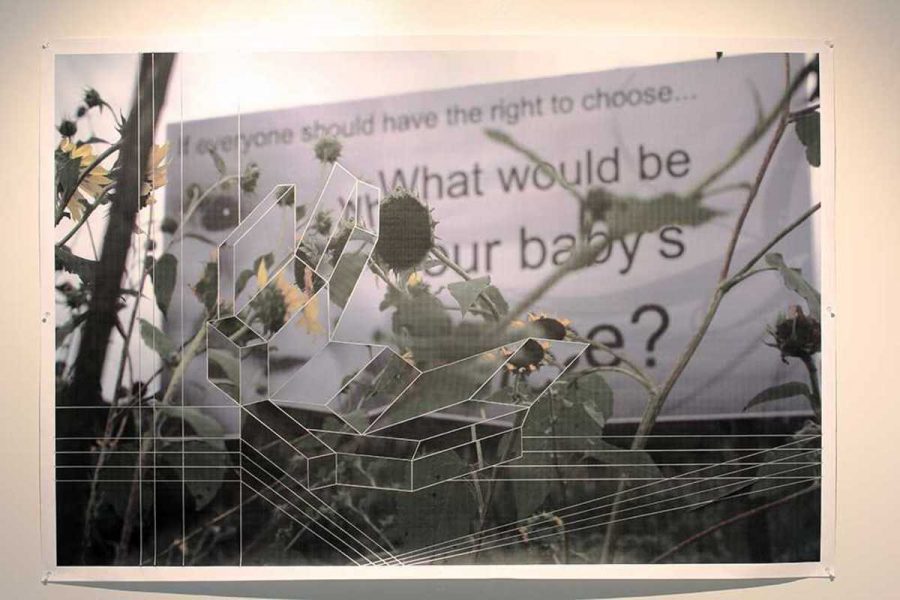New age of digital art
Chris Holton was inspired from traveling and seeing the different types of billboards. Holton created the above image by reconstructing geometric shapes in the image.
November 11, 2015
Before becoming an art major, Christopher Holton had been interested in mathematics.
Now he uses geometry in his artwork. Holton likes working with an extremely visual art, using sculpture and multimedia instillations to get his unique voice across.
“The interaction between objects and various forms of light is something I have been interested in since studying minimalism in art history,” Holton said. “Since then, the content of
my work has changed over the years, but visually there have been common characteristics thathave stuck around.”
Holton is Wayne State College graduate and an interim design professor here. Last Wednesday, in Gardner auditorium, he gave a presentation.
Holton explained the ideas and work behind a new collaborative exhibit titled “Fifty Thousand years of Nonlinear Editing.”
When Holton walked up to the podium the room was nearly filled with people, including his wife Halie Holton, son Blake and daughter Amelia.
When Holton took the stage, he explained how this work was a collaboration between himself and colleagues from graduate school at Montana State, Jade Lowder and Matthew
Schwager.
“Collaborating with other artists allows you to gain a greater insight to your own work. You have different perspectives coming together to create a cohesive body of work. It is a
rewarding experience when this work comes together,” Holton said.
Holton spoke, not only about learning and working at WSC, but about his growth as an artist. He continues to experiment with visual mediums working with light and different forms of
media. Finding his identity as an artist was a journey that he started from a young age and further explored in graduate school continuing to challenge himself moving from stationary works to
moving lights, video and allusion.
After explaining his progression as an artist, Holton talked about his latest exhibit and the social commentary it is.
This exhibit is a collaboration, so it not only uses video, but also has paintings and shows personal interpretations and edits of the artists’ experiences in New York.
Holton was specifically drawn back to the landscape and ideologies of northeast Nebraska. The show is mainly connected with a commonality of new experiences and is based upon different perspectives of editing how those views are reconfigured.
Lastly, Holton gave this advice for art students moving forward: “I would advise students to try to find a voice, or an identity that rings true to who they are. My other piece of advice is that art students should be treating their time at WSC as the beginning of their career,” Holton said. “Students should be in the studio making work when they are not fulfilling their duties to their other courses.”








